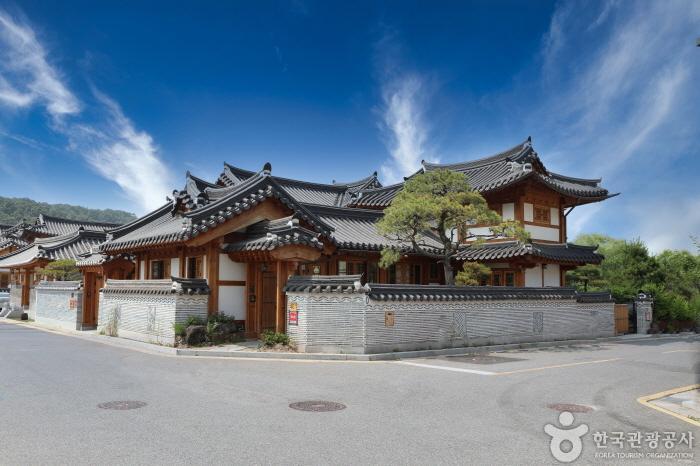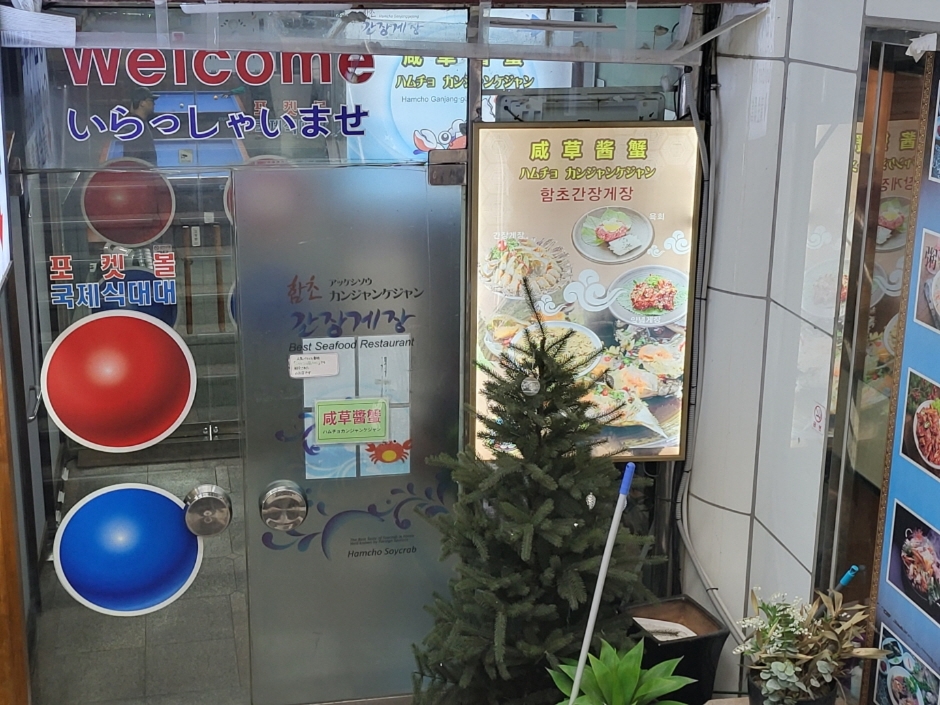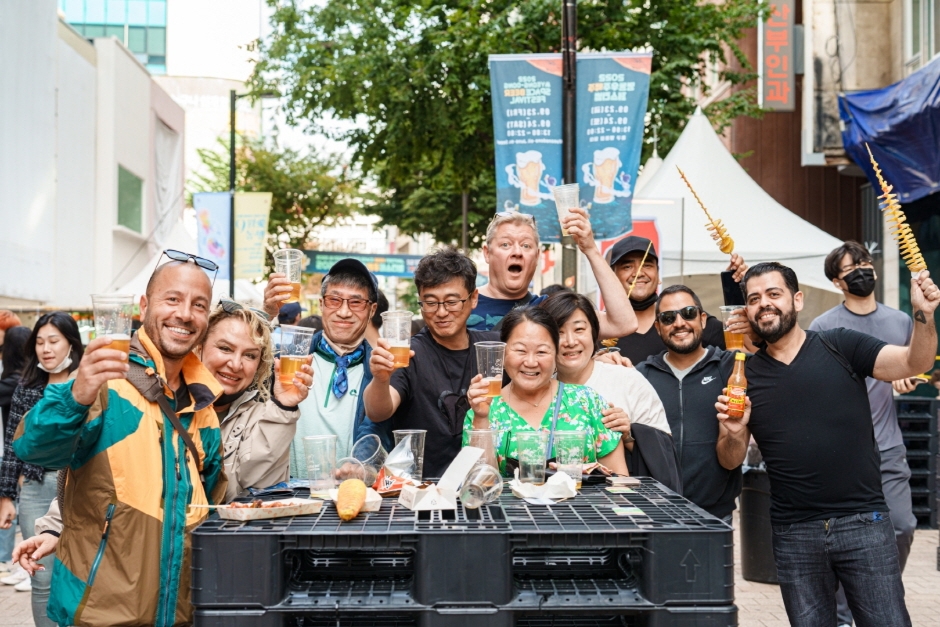Panerai - Lotte Avenuel Branch [Tax Refund Shop] (파네라이 롯데 에비뉴엘점)
7.9Km 2024-04-18
2F, 73, Namdaemun-ro, Jung-gu, Seoul
-
Chaumet - Lotte Avenuel Branch [Tax Refund Shop] (쇼메 롯데에비뉴엘점)
7.9Km 2024-04-23
3F, 73, Namdaemun-ro, Jung-gu, Seoul
-
MyungBo Inc - Lotte Avenuel Branch [Tax Refund Shop] (명보아이앤씨 에비뉴엘)
7.9Km 2024-06-27
73, Namdaemun-ro, Jung-gu, Seoul
-
Eungjung Hanok (응정헌)
7.9Km 2024-12-13
19 , Yeonseo-ro 50-gil, Eunpyeong-gu, Seoul
+82-10-5751-3270
Eungjeongheon is a private hanok accomodation located in Eunpyeong Hanok Village in Seoul, where the calm ambience and sensuous interior of the hanok create a harmonious balance. Upon entering the building, you will find a dining room where breakfast is served and a daecheong maru (wooden-floored hall). On the second floor, you will find a numaru (balcony-like raised veranda), a bedroom, and a terrace from which you can enjoy a panoramic view of Bukhansan Mountain and Hanok Village. A hearty breakfast is provided, as well as a variety of activities, including outdoor picnics in the backyard, illustrated gifts, yoga and meditation sessions, and foot baths. Bukhansan Dulle-gil Course 9 and Jingwansa Temple are within a 10-minute walk.
Deokseonjae [Korea Quality]덕선재[한국관광 품질인증]
7.9Km 2024-08-14
17-1, Yeonseo-ro 50-gil, Eunpyeong-gu, Seoul
+82-507-1379-0097
Deokseonjae is a hanok stay in Eunpyeong Hanok Village at the foot of Samgaksan Mountain in Eunpyeong-gu, Seoul. The skyline of Bukhansan Mountain and the architectural line of hanok are in harmony. From the hanok’s upper floor, guests will find spectacular, panoramic views of Bukhansan Mountain and its Eco Park. The second floor guestrooms consist of a living room, sleeping room and a bathroom, while the first floor is shared with the owner's family. A welcome snack and breakfast are provided.
Dalgaebi (달개비)
7.9Km 2024-03-15
16 Sejong-daero 19-gil, Jung-gu, Seoul
+82-82-2-765-2035, 2068
Dalgaebi is a restaurant specializing in Korean table d'hote, using fresh seasonal ingredients. Its flagship menu is the teukseon sangcharim jeongsik (special set menu), which includes porridge, seasonal dishes, main courses, and desserts. The galbi sangcharim (galbi course), featuring premium Korean beef galbi grilled over charcoal and served with soybean paste jjigae, is also popular. Known for its private dining spaces and upscale ambiance, reservations can be made via phone.
Hamcho Ganjanggejang (함초간장게장)
7.9Km 2024-03-11
27, Myeongdong 8ga-gil, Jung-gu, Seoul
+82-2-318-1624
Situated in Myeongdong Street, Hamcho Ganjanggejang specializes in ganjang gejang (soy sauce marinated crab). Their signature dish, ganjang gejang, is made by marinating blue crab in soy sauce and is a favorite among Koreans. Saeu jang (soy sauce marinated shrimp) and other seafood dishes (abalone, octopus, etc.) are also a must-try. In addition, the traditional Korean side dishes are so tasty that the restaurant never runs out of customers.
The Handsome Tommy Hilfiger - Myeong-dong Branch [Tax Refund Shop] (한섬 타미힐피거 명동)
7.9Km 2024-04-18
11, Myeongdong 6-gil, Jung-gu, Seoul
-
Charles & Keith - NOON SQUARE Branch [Tax Refund Shop] (찰스앤키스 눈스퀘어)
7.9Km 2024-04-18
2F, 14, Myeongdong-gil, Jung-gu, Seoul
-
Myeongdong Beer Festival (명동맥주페스티벌)
7.9Km 2025-05-20
14, Myeongdong-gil, Jung-gu, Seoul
+82-70-8670-2182
Myeongdong Beer Festival provide a chance to find one's preference through beer. Enjoy the cool fall weather with fun people all around.
![Panerai - Lotte Avenuel Branch [Tax Refund Shop] (파네라이 롯데 에비뉴엘점)](http://tong.visitkorea.or.kr/cms/resource/42/2890442_image2_1.jpg)
![Chaumet - Lotte Avenuel Branch [Tax Refund Shop] (쇼메 롯데에비뉴엘점)](http://tong.visitkorea.or.kr/cms/resource/65/2890465_image2_1.jpg)
![MyungBo Inc - Lotte Avenuel Branch [Tax Refund Shop] (명보아이앤씨 에비뉴엘)](http://tong.visitkorea.or.kr/cms/resource/62/3314562_image2_1.jpg)

![Deokseonjae [Korea Quality]덕선재[한국관광 품질인증]](http://tong.visitkorea.or.kr/cms/resource/80/3036980_image2_1.jpg)


![The Handsome Tommy Hilfiger - Myeong-dong Branch [Tax Refund Shop] (한섬 타미힐피거 명동)](http://tong.visitkorea.or.kr/cms/resource/47/2888847_image2_1.jpg)
![Charles & Keith - NOON SQUARE Branch [Tax Refund Shop] (찰스앤키스 눈스퀘어)](http://tong.visitkorea.or.kr/cms/resource/15/2888615_image2_1.jpg)

 English
English
 한국어
한국어 日本語
日本語 中文(简体)
中文(简体) Deutsch
Deutsch Français
Français Español
Español Русский
Русский